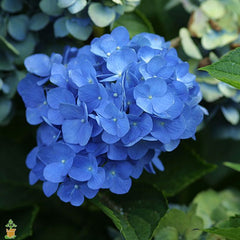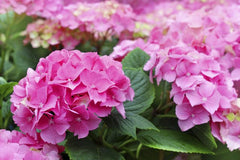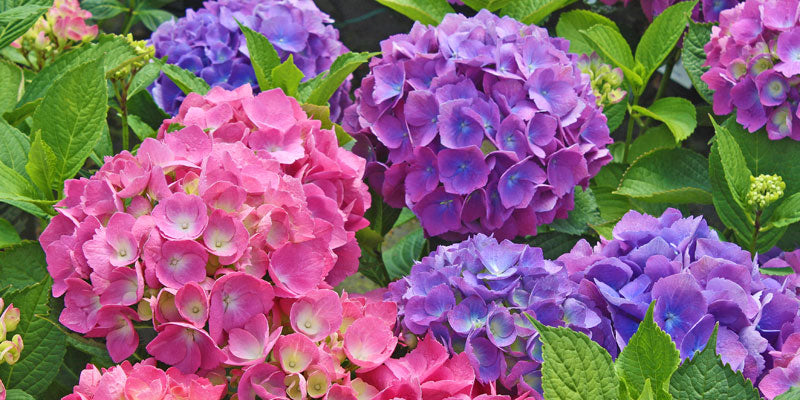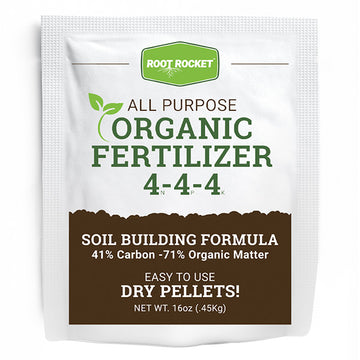Do you love large and colorful Hydrangea flowers? We do too! These stunning flowering bushes grow throughout the United States. Hydrangea care is fairly easy, but depending on your area, the type of hydrangea you have, and if you are seeking a certain color, you will want to adjust how you care for your hydrangea.
Don’t worry! Hydrangea care isn’t hard. The main task is keeping these plants watered in the extreme heat.
Spring and fall are ideal times to plant Hydrangea bushes. But you can still plant hydrangeas in summer or winter in mild climates or when temperatures aren't extreme. Be sure summer planted hydrangeas get plenty of extra water. The most important thing to remember is to keep them watered initially so that they can become established and develop a larger root system. When planting your Hydrangea, be sure to choose the right location. Try to find an area that gets some sun and gets some shade. This would be the ideal location and your plant will be much more successful.
Hydrangea Care
Hydrangeas thrive in full sun to part shade. In warmer climates, like zones 8 or 9, choosing part sun or part shade is ideal. Moist, well-drained, fertile soil will keep a Hydrangea bush happy. Keep the soil moist, but not saturated, especially in summer and in the first year after planting. Hydrangeas will do best with a deep watering once weekly during summer. In warmer areas, your plant (especially if in full sun) may require an additional deep watering or two a week in summer. Mulching at about 2 inches deep is great for Hydrangeas. Mulching will cut back on watering needs and protect your plant during extreme temperatures. If you do see its leaves wilting, the best thing to do is drench it right away! Choose a slow release fertilizer and apply once in spring after the last chance of frost and again in early summer for best results. You don’t need to prune hydrangeas, but pruning after they are done blooming can help encourage a bushier growth and renew an older plant. If you want to control size and shape and will want to prune more often be sure to determine if your plant blooms on new or old wood to avoid losing your precious hydrangea flowers. Learn more about pruning Hydrangeas
Hydrangea Pests and Disease
The best way to prevent disease and pests is by providing the appropriate care for your plants. Proper location choice, watering, and fertilization keep your plants healthy and significantly less susceptible to these issues. You can treat mites, scale, whiteflies, and aphids naturally with neem oil or insecticidal soap. For severe infestations you can use pesticides like carbaryl, also known as Sevin. Fungal infection can be prevented by making sure the planting site has good drainage and by avoiding overhead watering. Fungal infections can be treated with a fungicide. Generally, treating fungus after infection isn't effective so if you have problems in a prior year, treat preventively in early spring.
Changing Hydrangea Color
If you would like your Hydrangea to be a certain color, be sure to choose a type where the color can be adjusted. Look to the Hydrangea macrophylla. The color can be adjusted with this variety. Test your soil to determine pH or whether your soil is acidic, basic, or neutral. Acidic soil will give you blue hydrangea flowers, basic soil will create pink blooms, and neutral can give you pink AND blue as well as purple blooms.
Blue Hydrangeas:
 To get those highly sought after blue flowers, acidify your soil, amend with compost, elemental sulfur, or use fertilizers specific for acid loving plants. Amending with sulfur tends to work the quickest and last the longest. However several doses may be required to get your soil where it needs to be to give you the color you want. Most likely you will need to add sulfur yearly. Mulching with pine straw or pine bark will help over time as they begin to break down, they will naturally add acidity to the soil.
To get those highly sought after blue flowers, acidify your soil, amend with compost, elemental sulfur, or use fertilizers specific for acid loving plants. Amending with sulfur tends to work the quickest and last the longest. However several doses may be required to get your soil where it needs to be to give you the color you want. Most likely you will need to add sulfur yearly. Mulching with pine straw or pine bark will help over time as they begin to break down, they will naturally add acidity to the soil.
The Nikko Blue, and the Endless Summer Hydrangea are great varieties that bring out a nice blue color when the soil is acidic. If your blooms are slightly pink and you're going for blue, don't worry it may take extra time. Never use any acids to change the pH of the soil because they can do more harm than good.
Pink Hydrangeas:
 Amending your soil with lime will give you a basic soil and award you with the pink hydrangea flowers you are seeking. As with sulfur, lime can take several doses as well. A couple of handfuls of lime mixed in with the soil is all you will need.
Amending your soil with lime will give you a basic soil and award you with the pink hydrangea flowers you are seeking. As with sulfur, lime can take several doses as well. A couple of handfuls of lime mixed in with the soil is all you will need.
The Penny Mac and our favorite dwarf hydrangea, Cityline Paris, are well-known for their pink color. The penny mac will have more of a mix between blue and pink, but the Cityline Paris, will have a brilliant dark pink that really is noticeable from a distance.
Conclusion:
If you are looking for a gorgeous, colorful plant with huge flowers, Hydrangeas are the perfect choice for you. Hydrangea care is easy, especially once your bush is established. If you want a certain hydrangea flower color, you will have a bit more work to do. But in the end you will be rewarded with a stunning plant that is exactly what you want!

Now that you know all about hydrangea care, browse our huge selection of Hydrangeas!

